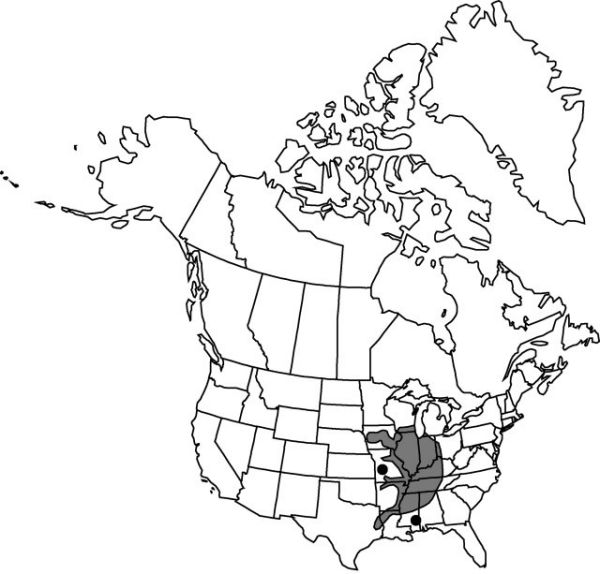Difference between revisions of "Trillium recurvatum"
Amer. J. Sci. Arts 11: 178. 1826.
FNA>Volume Importer |
imported>Volume Importer |
||
| (One intermediate revision by the same user not shown) | |||
| Line 8: | Line 8: | ||
}} | }} | ||
|common_names=Prairie trillium;toadshade;bloody noses | |common_names=Prairie trillium;toadshade;bloody noses | ||
| + | |special_status={{Treatment/ID/Special_status | ||
| + | |code=F | ||
| + | |label=Illustrated | ||
| + | }}{{Treatment/ID/Special_status | ||
| + | |code=E | ||
| + | |label=Endemic | ||
| + | }} | ||
|basionyms= | |basionyms= | ||
|synonyms= | |synonyms= | ||
| Line 46: | Line 53: | ||
|publication title=Amer. J. Sci. Arts | |publication title=Amer. J. Sci. Arts | ||
|publication year=1826 | |publication year=1826 | ||
| − | |special status= | + | |special status=Illustrated;Endemic |
| − | |source xml=https:// | + | |source xml=https://bitbucket.org/aafc-mbb/fna-data-curation/src/2e0870ddd59836b60bcf96646a41e87ea5a5943a/coarse_grained_fna_xml/V26/V26_137.xml |
|genus=Trillium | |genus=Trillium | ||
|subgenus=Trillium subg. Phyllantherum | |subgenus=Trillium subg. Phyllantherum | ||
Latest revision as of 21:13, 5 November 2020
Rhizomes horizontal, white, slender, elongated, brittle. Scapes typically 1(–3), round in cross section, 1.5–4.8 dm, slender to robust, glabrous. Bracts held well above ground, strongly petiolate; blade at first strongly mottled in darker green or bronze, mottling fading with seasonal expansion after anthesis, rarely all green, ovate, elliptic, or lanceolate, 6–18 × 2.5–6.5 cm, not glossy, apex acuminate; petiole ca. 1/5 bract length. Flower erect, fragrance not reported; sepals strongly recurved basally and held against scape by turgor pressure, green, sometimes purple-streaked, ovate-lanceolate, 18–35 × 6–18 mm, margins entire, apex acute; petals long-lasting, erect, ± connivent, ± concealing stamens and ovary, dark maroon purple to clear yellow, occasionally 2-colored with purple and yellow, not spirally twisted, lanceolate to ovate, 1.8–4.8 × 0.9–2 cm, thick-textured, base attenuate to weakly clawed, margins entire, apex acute; stamens incurved, 10–15 mm; filaments erect, dark purple, 4–6 mm, ± slender; anthers strongly incurved above filaments, dark purple, 5–16 mm, ± thick, dehiscence introrse; connectives strongly incurved inward, dark purple, projecting about 1 mm beyond anther sacs; ovary greenish with ± purple stains distally, transversely rhombic to angular-ovate, somewhat 6-angled or -winged, 7–10 mm, ± equaling filament height; stigmas erect, divergent-recurved, distinct, ± linear, 4–6 mm, slightly thickened basally. Fruits green to white- and purple-streaked, odorless, rhomboid-ovoid, 6-angled, almost winged, ca. 1 cm diam., pulpy. 2n = 10.
Phenology: Flowering spring (late Mar–late May).
Habitat: Rich clayey floodplain soils, plants often temporarily inundated while in flower, rich moist woods and bluffs, limestone-derived soils
Elevation: 100–200 m
Distribution

Ala., Ark., Ill., Ind., Iowa, Ky., La., Mich., Miss., Mo., Ohio, Tenn., Tex., Wis.
Discussion
Trillium recurvatum has several named color forms, most notably forma shayi E. J. Palmer & Steyermark with clear yellow petals, and one foliose anomaly (possibly caused by mycoplasma).
Selected References
None.
